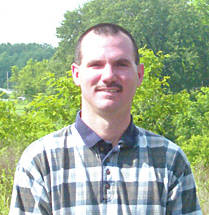The Ohio Department of Natural Resources Division of Wildlife is asking deer hunters to help keep Ohio’s wild white-tailed deer herd free of Chronic Wasting Disease. CWD is an incurable fatal neurological disease that affects deer populations.
There is no strong evidence that CWD is transmissible to humans; however, hunters are encouraged to follow standard precautions when handling deer parts, including: Wear rubber gloves when field-dressing and thoroughly wash hands and instruments after butchering and field dressing. Minimize the handling of brain and spinal tissues. Do not eat the brain, spinal cord, eyes, spleen, tonsils and lymph nodes. Do not consume meat from any animal that appears sick or tests positive for CWD. Hunters may have their deer tested by the Ohio Department of Agriculture’s Animal Disease Diagnostic Laboratory for a small fee. Please call 614-728-6220 for more information.
To help protect Ohio’s deer herd from CWD, hunters should properly dispose of their deer carcasses by double-bagging all high-risk parts (brain, spinal cord, eyes and lymphoid tissue) and dispose of them in a secure container.
To minimize the risk of spreading CWD, hunters planning to hunt outside of Ohio are reminded to follow carcass regulations prior to returning. The proper handling of carcasses, trims, and parts dramatically decreases the odds of introducing CWD into Ohio’s wild deer herd. No person is permitted to bring high-risk carcass parts of CWD-susceptible species (white-tailed deer, black-tailed deer, mule deer, elk, caribou or moose) into Ohio from any state, Mexican state or Canadian province. High-risk carcass parts may be transported through Ohio if they are not unloaded within the state.
If you hunt outside Ohio, you must bone out the meat before returning to the state with an elk, mule deer, white-tailed deer, black-tailed deer, caribou or moose. Only the following parts may be brought into Ohio: Meat with no part of the spinal column or head attached; Meat that is boned out, securely and completely wrapped either commercially or privately; Cleaned hides with no heads attached; Skull plates that have been cleaned of all meat and brain tissue; Antlers with no meat or tissue attached; Cleaned upper canine teeth; Hides and capes without any part of the head or lymph nodes attached; or Finished taxidermy mounts.
As a reminder, portions of Holmes and Tuscarawas counties have been declared a Disease Surveillance Area as part of the state’s ongoing efforts to monitor CWD. Specific regulations that apply to hunters, including mandatory sampling dates and inspection state locations, may be found in the 2019-2020 Hunting and Trapping Regulations book and at wildohio.gov.
If hunters have questions about CWD or actions they may take to help protect Ohio’s wild deer herd, they may call their county wildlife officer, 800-WILDLIFE (800-945-3543), or a wildlife district office. The Division of Wildlife is responsible for managing Ohio’s fish and wildlife resources for the benefit of all Ohioans. The Division of Wildlife greatly appreciates the cooperation of hunters in helping monitor Ohio’s deer herd. For more information about CWD, visit wildohio.gov.
• Ohio Governor Mike DeWine joined governors from Michigan, Wisconsin, Pennsylvania, Illinois, and Minnesota in sending a letter to members of the U.S. House Committee on Natural Resources in support of the Recovering America’s Wildlife Act. The bill would dedicate almost $1.4 billion for fish and wildlife conservation efforts across the country.
“Future generations should have the opportunity to enjoy Ohio’s wildlife and wild places,” said Governor DeWine. “It’s our responsibility to take proactive measures that will protect and conserve these vital and vulnerable resources.”
The bill would provide approximately $1.3 billion for state-level conservation and $97.5 million to tribal nations annually to recover and sustain healthy fish and wildlife populations. Funds would be used to accelerate the recovery of more than 12,000 species by implementing the strategies identified in each state’s congressionally-mandated State Wildlife Action Plan.
“It’s critical that we take action to protect the future of wildlife in Ohio,” said Mary Mertz, director of the Ohio Department of Natural Resources. “If passed, this funding would help our state to conserve its great diversity of species and ensure that future generations can enjoy abundant fish, wildlife and outdoor recreation opportunities.”
Ohio currently receives approximately $1.4 million in federal funding per year to protect, restore, and manage the state’s most at-risk species. Under the current proposal, Ohio’s portion of the funding would increase to an estimated $28 million annually, with a required non-federal match of approximately $9 million annually.
According to the Ohio Department of Natural Resources, Ohio has 94 species considered at risk of extinction, either globally or nationally, and another 400 species identified as in-need. Once a species declines to the point of being listed, it is very difficult to recover. Taking proactive and collaborative measures to maintain and recover populations before they become at-risk can save taxpayer resources and allow businesses to operate with more regulatory certainty and reduced risk.
Other governors who also signed the letter include J.B. Pritzker (Illinois), Gretchen Whitmer (Michigan), Tim Walz (Minnesota), Tom Wolf (Pennsylvania) and Tony Evers (Wisconsin). The letter was sent to the U.S. House Committee on Natural Resources chairman, Rep. Raúl Grijalva, and ranking member, Rep. Rob Bishop.
Until next time, Good Hunting and Good Fishing!




